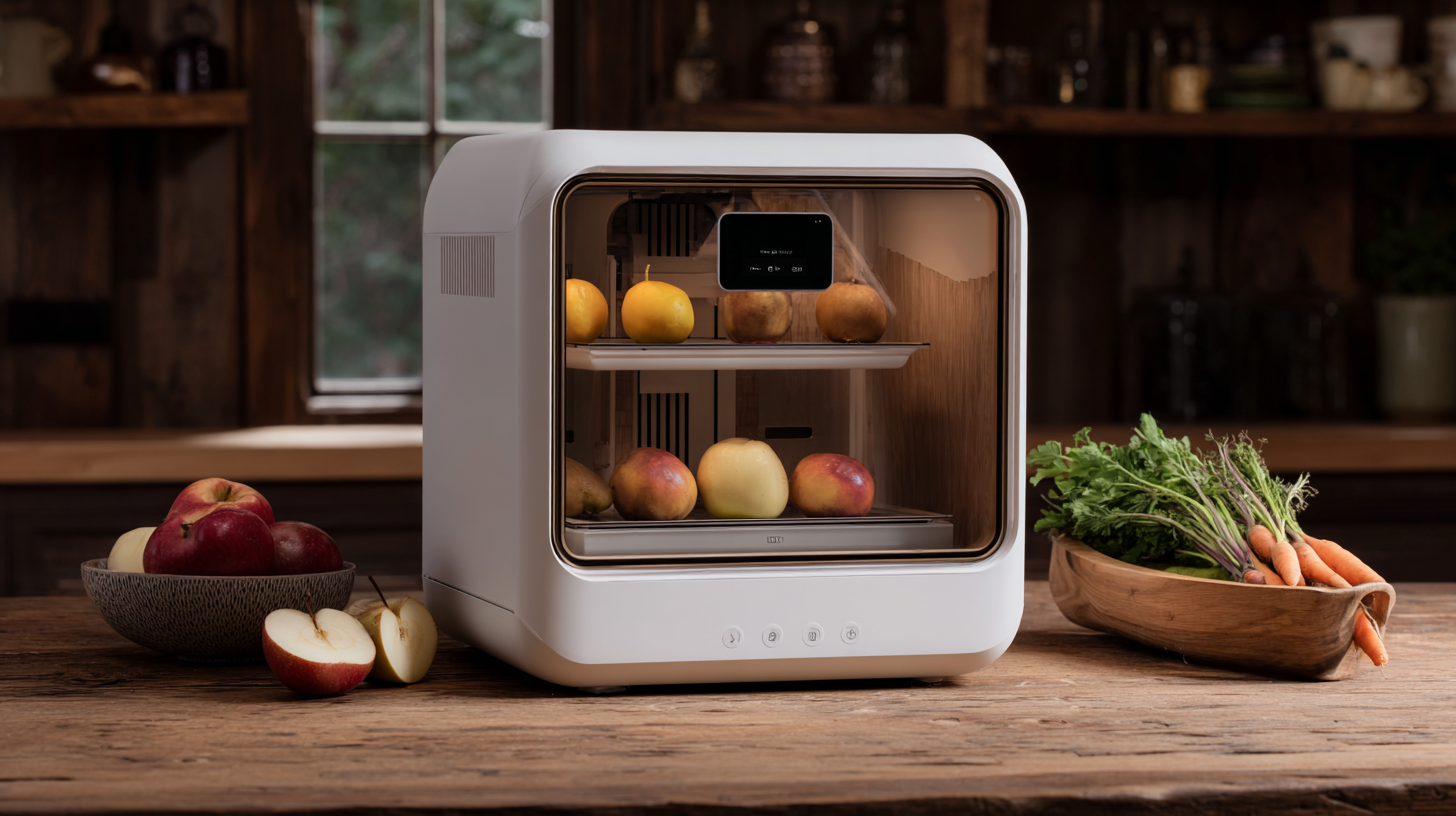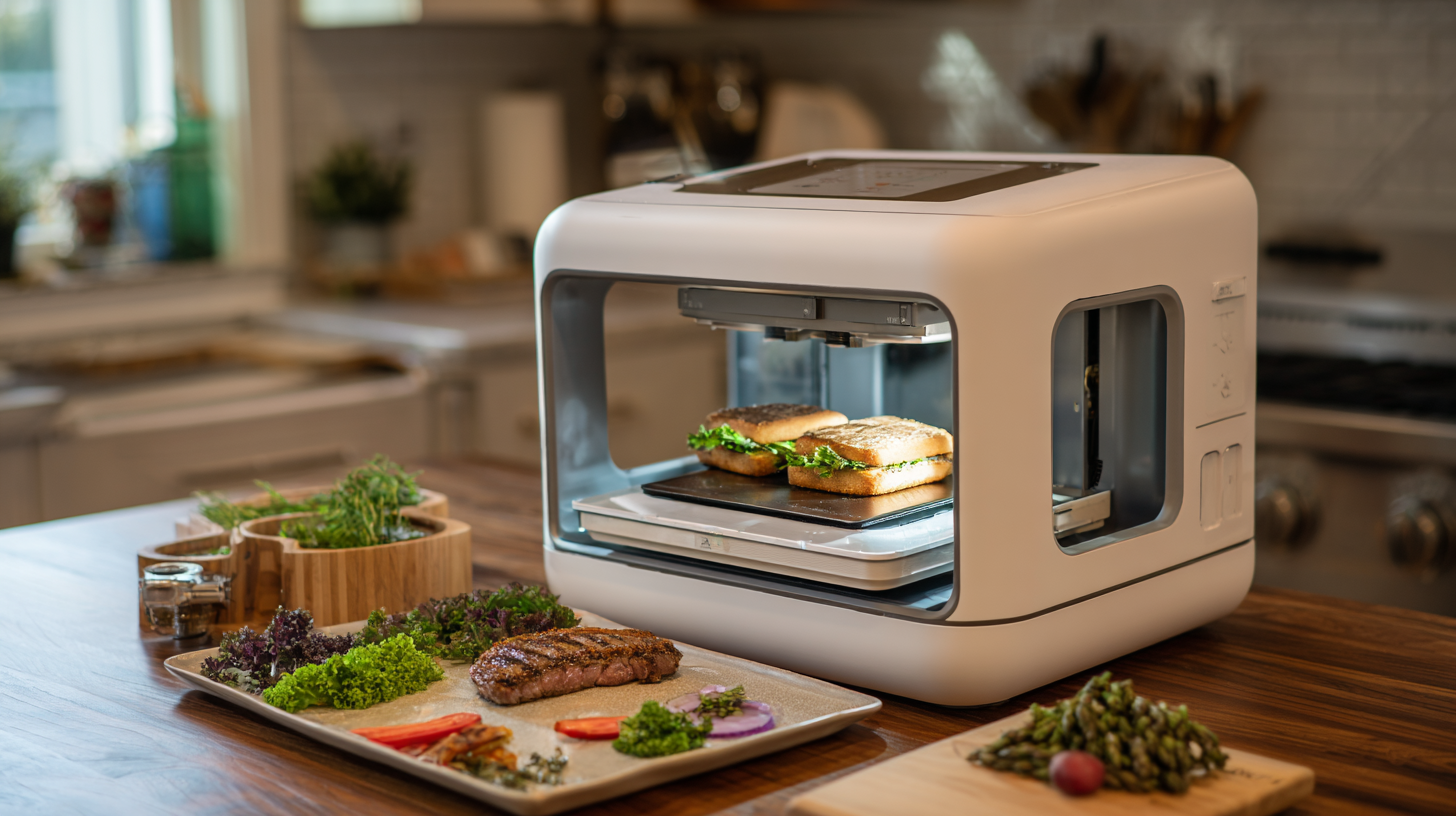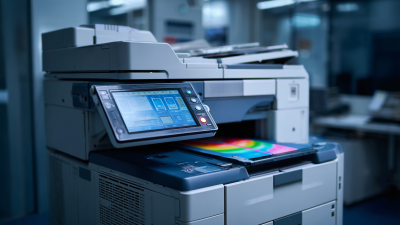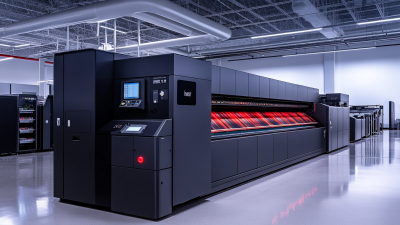Partner Login
Enter your username and password here on order to log in on the partner portal:
No registered partner yet?
Register nowRevolutionize Your Kitchen in 2025 with the Best Food Printers: A Complete Guide
As we look toward the future of culinary innovation, the kitchen is poised for a revolution with the rise of Food Printers. By 2025, the global food printing market is projected to reach unprecedented heights, valued at over $1.5 billion, according to a recent report by MarketsandMarkets. This technology not only promises to enhance creativity and personalization in home cooking, but it also addresses the increasing demand for customized nutrition, as more consumers seek tailored dietary options.
Food Printers are already beginning to transform traditional cooking paradigms, enabling users to print intricate designs and flavors that were once the exclusive domain of skilled chefs. With the ability to utilize diverse materials ranging from chocolate to savory ingredients, gastronomy becomes an art form accessible to everyone. Industry experts estimate that by 2025, the adoption of food printing technology will expand exponentially, driven by advancements in 3D printing and an increasing emphasis on sustainability in food production.
This complete guide will delve into the fundamentals of Food Printers, exploring the leading products on the market and how they can empower home cooks to elevate their culinary experiences. Join us as we navigate this exciting landscape and discover how Food Printers will revolutionize kitchens in the coming years.

Understanding the Basics of Food Printing Technology for Home Use
As we move towards 2025, food printing technology is making significant strides, transforming the way we prepare and present meals at home. Understanding the basics of this innovative technology is crucial for anyone looking to revolutionize their kitchen. Food printers use specialized edible inks and substrates to create intricate designs and textures, allowing users to turn their culinary ideas into edible masterpieces. According to a report by Mordor Intelligence, the global 3D food printing market is expected to reach $400 million by 2025, reflecting a growing interest and demand for this technology in residential kitchens.

Food printing operates on a layer-by-layer additive manufacturing principle, similar to traditional 3D printing in various industries. With food-specific printers, ingredients such as chocolate, dough, and pureed fruits can be used to create customized dishes. Research from MarketsandMarkets indicates that the food technology sector is increasingly adopting 3D printing, with applications in both professional kitchens and home use. This shift not only inspires creativity but also opens doors for health-conscious individuals to control ingredients and portion sizes, making this technology an attractive option for home cooks looking to enhance their culinary experiences.
Key Features to Look for in the Best Food Printers for 2025
When choosing the best food printers for 2025, key features play a crucial role in enhancing culinary creativity and efficiency. One of the most significant aspects to consider is printing precision. High-resolution printers capable of delivering intricate designs can elevate food presentation, allowing for stunning visual effects that impress guests and enhance the dining experience. Additionally, adaptability in printing materials is essential. The best food printers should accommodate a variety of edible inks and ingredients, such as chocolate, frosting, and purees, offering versatility for different culinary projects.

Another important feature is user-friendly technology. As kitchen gadgets continue to evolve, having intuitive software and easy connectivity options, such as Wi-Fi and app integration, can streamline the printing process. Look for models that offer customizable templates and guided interfaces to prevent the learning curve from becoming a barrier. Additionally, reliable maintenance and support options should not be overlooked, ensuring that your printer remains in optimal working condition, allowing you to focus on creativity in the kitchen instead of technical issues.
Exploring the Health and Safety Considerations of Food Printing
As the food industry embraces innovation, the advent of food printing technology raises important health and safety considerations. One primary concern is the sourcing and quality of ingredients used in food printers. When exploring food printing, it's crucial to ensure that all materials meet safety standards to prevent contamination. Additionally, the nutritional value of printed food must be carefully assessed, as the process could potentially alter the composition of vitamins and minerals.
Tips for ensuring safe food printing include thoroughly researching suppliers and opting for high-quality, organic ingredients. Regular maintenance and cleaning of the food printer can also help prevent cross-contamination and other safety risks. Furthermore, staying informed about the latest regulations and guidelines in food safety will enable users to make better choices while utilizing this cutting-edge technology.
The potential of 3D-printed food goes beyond mere novelty; it could address issues like food waste and customization in diets. However, it's vital to approach this innovation thoughtfully. Monitoring the evolving landscape of food safety and health regulations will be essential as this trend continues to develop, ensuring that the exciting possibilities of food printing do not compromise consumer health.
Food Printing Adoption Rates by Year (2020-2025)
Innovative Recipes and Ideas to Try with Your Food Printer
In the evolving landscape of culinary technology, food printers are set to transform the way we prepare and consume meals in 2025 and beyond. With innovations emerging from various startups, the possibilities are truly exciting. For instance, recent advancements have shown that the 3D food printing market is projected to grow at a compound annual growth rate of over 20% in the next few years, reflecting a growing interest among culinary professionals and enthusiasts alike in experimenting with 3D-printed food.
One standout development is the integration of artificial intelligence in food printing, such as the AI-powered printers that turn food waste into functional household items. This sustainable approach not only addresses the global food waste crisis—estimated to reach 2.1 billion tons annually by 2030—but also redefines how we utilize our kitchen scraps. The application of this technology promises innovative recipes that utilize shapes and forms previously unimaginable, allowing chefs to craft intricate designs that enhance both presentation and flavor.
Moreover, the latest research from organizations such as the Hong Kong University of Science and Technology shows that AI-assisted 3D food printing can achieve cooking precision through infrared technology, opening up new avenues for both at-home cooks and professional chefs. As the industry embraces these advancements, the range of creative recipes and applications will likely expand, making 3D food printing a staple in kitchens looking to innovate and reduce food waste simultaneously.
Revolutionize Your Kitchen in 2025 with the Best Food Printers: A Complete Guide
| Feature | Description | Innovative Recipe Ideas | User Experience Rating |
|---|---|---|---|
| High Resolution Printing | Prints food items with high detail and realism. | Custom-designed chocolate bars with personalized images. | 4.5/5 |
| Eco-Friendly Materials | Uses biodegradable inks and food-safe materials. | Edible printed cupcake toppers for celebrations. | 4.7/5 |
| Smart Connectivity | Wi-Fi and app-enabled for easy printing from mobile devices. | Print personalized smoothie bowls with designs. | 4.6/5 |
| Multi-Ingredient Capability | Can mix and match ingredients for complex prints. | Layered savory tarts with intricate designs. | 4.8/5 |
| Compact Design | Space-saving design fits easily in any kitchen. | Print custom shapes for party snacks. | 4.4/5 |
How Food Printers Can Transform Culinary Creativity in Your Kitchen
Food printers are set to revolutionize culinary creativity in kitchens around the world by 2025, offering home chefs and professionals alike the ability to craft intricate dishes with precision and imagination. These ingenious devices work by layering edible materials, such as purees and dough, to create stunning visuals and complex flavors that would be nearly impossible to achieve by traditional means. This technological advancement allows cooks to experiment with shapes, colors, and textures, transforming their culinary visions into reality.
Moreover, food printers open up new avenues for personalization in dining experiences. Imagine tailoring meals specifically to dietary restrictions, preferences, or even aesthetic themes for special occasions. With the ability to design meals from scratch, chefs can create unique dishes that reflect individual tastes and cultural backgrounds, enhancing the communal aspect of meal sharing. As food printers become more mainstream, they will not only redefine how we cook but also how we perceive and enjoy food, pushing the boundaries of culinary art in unprecedented ways.
Related Posts
-

How to Choose the Right Industrial Printer for Your Business Needs
-

Finding Quality Suppliers for Best Printer Machine with Essential Checklist
-

Maximizing Your Investment in the Best Printer Machine with 7 Essential Service Tips to Reduce Repair Costs
-

Leading Inkjet Cartridge Manufacturers from China at the 137th Canton Fair
-

Empowering Global Industries with Innovative Industrial Inkjet Printing Solutions
-

Maximizing Efficiency and Quality with Ink Jet Technology in Modern Printing Solutions